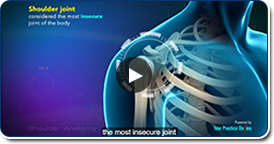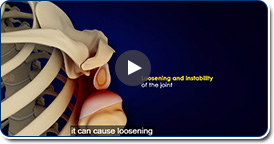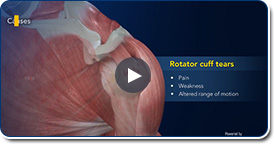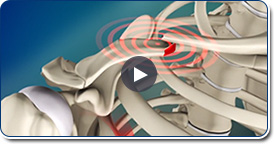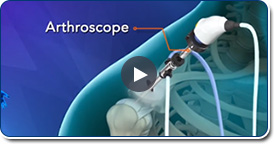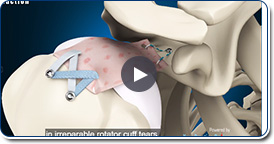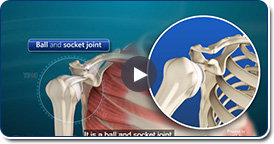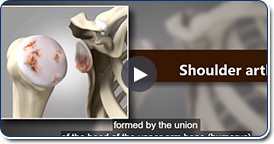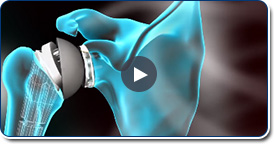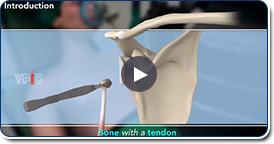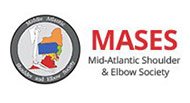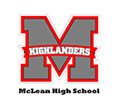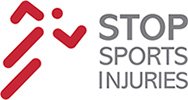Shoulder
Normal Anatomy of the Shoulder Joint
The shoulder is the most flexible joint in the body making it the most susceptible to instability and injury. It is a 'ball-and-socket' joint. A ‘ball' at the top of the upper arm bone, humerus, fits neatly into a 'socket’, called the glenoid, which is part of the shoulder blade, scapula. The shoulder joint is made up several bones and soft tissues. It has three bones, the collarbone (clavicle), scapula, and humerus.
Shoulder Instability
Shoulder instability is a chronic condition that causes frequent dislocations of the shoulder joint. A dislocation occurs when the end of the humerus (the ball portion) partially or completely dislocates from the glenoid (the socket portion) of the shoulder. A partial dislocation is referred to as a subluxation whereas a complete separation is referred to as a dislocation.
Rotator Cuff Tear
Rotator cuff is the group of tendons in the shoulder joint providing support and enabling wider range of motion. Major injury to these tendons may result in tear of these tendons and the condition is called as rotator cuff tear. It is one of the most common causes of shoulder pain in middle aged adults and older individuals.
Frozen Shoulder
Frozen shoulder, also called adhesive capsulitis is a condition characterized by pain and loss of motion in shoulder joint. It is more common in older adults aged between 40 and 60 years and is more common in women than men.
Shoulder Impingement
Shoulder impingement is the condition of inflammation of the tendons of the shoulder joint. It is one of the most common causes of pain in the adult shoulder. The shoulder is a 'ball-and-socket' joint. A ‘ball' at the top of the upper arm bone, humerus, fits neatly into a 'socket’, called the glenoid, which is part of the shoulder blade, scapula.
Clavicle Fracture
Clavicle fracture, also called broken collarbone is a very common sports injury seen in people who are involved in contact sports such as football and martial arts as well as impact sports such as motor racing. A direct blow over the shoulder that may occur during a fall on an outstretched arm or a motor vehicle accident may cause the clavicle bone to break. Broken clavicle may cause difficulty in lifting your arm because of pain, swelling and bruising over the bone.
Shoulder Arthroscopy
Arthroscopy is a minimally invasive diagnostic and surgical procedure performed for joint problems. Shoulder arthroscopy is performed using a pencil-sized instrument called an Arthroscope. The arthroscope consists of a light system and camera to project images to a computer screen for your surgeon to view the surgical site.
Superior Capsule Reconstruction
The shoulder joint is stabilized by the joint capsule and rotator cuff. Tears to the rotator cuff can cause severe pain and impairment. When defects in the underlying upper joint capsule add to the instability caused by rotator cuff tears, it cannot be repaired with conventional treatments. Superior capsular reconstruction is a surgical procedure performed to restore shoulder stability in irreparable rotator cuff tears.
SLAP Repair
Your shoulder joint is a ball and socket joint made up of the upper arm bone, the shoulder blade and the collarbone. The head of the upper arm bone fits into the socket of the shoulder joint known as the glenoid cavity. The outer edge of the glenoid is surrounded by a strong fibrous tissue called the labrum. A superior labrum anterior and posterior tear or SLAP tear is an injury to the labrum. This injury may also involve the biceps tendon, which is attached to the top part of the labrum.
Shoulder Joint Replacement
The shoulder is a highly movable body joint that allows various movements of the arm. It is a ball and socket joint, where the head of the humerus (upper arm bone) articulates with the socket of the scapula (shoulder blade) called the glenoid. The two articulating surfaces of the bones are covered with cartilage, which prevents friction between the moving bones. The cartilage is lubricated by synovial fluid. Tendons and ligaments around the shoulder joint provide strength and stability to the joint.
Reverse Total Shoulder Replacement
Reverse total shoulder replacement, is an advanced surgical technique specifically designed for rotator cuff tear arthropathy, a condition where the patient suffers from both shoulder arthritis and a rotator cuff tear. The shoulder joint is a ball and socket joint formed by the union of the head of the upper arm bone (humerus) and the shoulder socket (glenoid). The rotator cuff is a group of four tendons that join the head of the humerus to the deeper shoulder muscles to provide stability and mobility to the shoulder joint.
Arthroscopic Biological Total Shoulder Resurfacing
Shoulder arthritis is an inflammatory condition causing pain and stiffness in the joint. It can be successfully treated with total joint replacement surgery which is commonly performed on older patients. However, the surgery is not advisable for young active individuals due to concerns with durability of the implants used in replacement surgery. Joint replacement surgery uses metal and plastic prostheses to replace the damaged cartilage of the shoulder joint.
Latarjet Procedure
The shoulder joint provides a wide range of movement to the upper extremity but overuse or trauma can cause instability to the joint. The Latarjet procedure is a surgical procedure performed to treat shoulder instability by relocating a piece of bone with an attached tendon to the shoulder joint.



